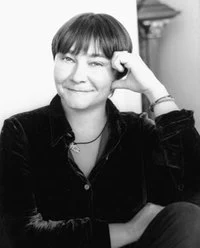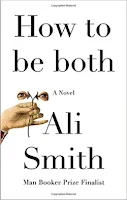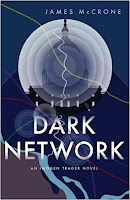“How to be Both” by Ali Smith – Structural Lawlessness
As I've taken to mentioning it in virtually every single book review dealing with romantic literature, it really isn't my cup of tea, but in the interest of keeping an open mind and preserving a varied reading experience, I do give some of them a spin from time to time. How to be Both by Ali Smith is a novel which attracted my attention because I felt its different approach to the entirety of the structure could potentially make for a surprising read.
Basically, we are told two love stories, each one taking up half the book. One takes place in the fifteenth century during the Renaissance, while the other one is set in the modern day.
Needless to say, though both stories seem unrelated, as they progress they become thematically-linked to one another, and Smith really manages to make the two distinct tales feel like they belong together, progressively fusing them into one in many ways.
One very interesting aspect about the book which I am certain caught the eyes of many avid readers out there, is the fact that the book has been printed in two editions, and there is no way of knowing which one you are going to receive. The difference between them is that in one, the narrative titled EYES comes before the one called CAMERA, and in the other one it's the reverse.
Now, rest assured the content of the narratives themselves has been left completely untouched, it is just their order that has been switched around. The idea is that the two can be read in any order and still make for a powerful experience, and so readers can have different experiences without actually ruining the plot or anything else for that matter.
As you can guess, the narrative structure kind of takes center place in this novel as Smith seems to really make a point out of playing around with various techniques and devices, and though most of the time they do achieve a surprising and desired effect, there remain instances where going the simple route would have done wonders.
Of course, it is hardly possible to avoid all bumps and hitches on such an experimental road, and these ones don't really detract from it in the end.
When it comes to the quality of the story and its participants, I just have to say it once again, romance stories aren't really my thing, and so I found it hard to really get engaged in it.
Objectively-speaking though, there is more than enough intrigue to go around to keep you interested in different facets of the story, and from what I can tell, the romance itself is not too cheesy or sloppy, nor does it feel like the book is saturated with it.
All things being said and done, if you do enjoy these types of grandiose love stories taking place in different epochs and are searching for a more unusual and quirky reading experience, then I do recommend you have a look at How to be Both, for in the end, it is an enjoyable adventure that really can make you forget about the trials and tribulations we face in the real world.
Basically, we are told two love stories, each one taking up half the book. One takes place in the fifteenth century during the Renaissance, while the other one is set in the modern day.
Needless to say, though both stories seem unrelated, as they progress they become thematically-linked to one another, and Smith really manages to make the two distinct tales feel like they belong together, progressively fusing them into one in many ways.
One very interesting aspect about the book which I am certain caught the eyes of many avid readers out there, is the fact that the book has been printed in two editions, and there is no way of knowing which one you are going to receive. The difference between them is that in one, the narrative titled EYES comes before the one called CAMERA, and in the other one it's the reverse.
Now, rest assured the content of the narratives themselves has been left completely untouched, it is just their order that has been switched around. The idea is that the two can be read in any order and still make for a powerful experience, and so readers can have different experiences without actually ruining the plot or anything else for that matter.
As you can guess, the narrative structure kind of takes center place in this novel as Smith seems to really make a point out of playing around with various techniques and devices, and though most of the time they do achieve a surprising and desired effect, there remain instances where going the simple route would have done wonders.
Of course, it is hardly possible to avoid all bumps and hitches on such an experimental road, and these ones don't really detract from it in the end.
When it comes to the quality of the story and its participants, I just have to say it once again, romance stories aren't really my thing, and so I found it hard to really get engaged in it.
Objectively-speaking though, there is more than enough intrigue to go around to keep you interested in different facets of the story, and from what I can tell, the romance itself is not too cheesy or sloppy, nor does it feel like the book is saturated with it.
All things being said and done, if you do enjoy these types of grandiose love stories taking place in different epochs and are searching for a more unusual and quirky reading experience, then I do recommend you have a look at How to be Both, for in the end, it is an enjoyable adventure that really can make you forget about the trials and tribulations we face in the real world.
 | Ali SmithAli Smith is a Scottish writer living in Cambridge who studied at the University of Aberdeen as well as the Newnham College, although sadly she never ended up finishing her PhD. In a splendid turn of events though, she did end up becoming a full-time writer for The Guardian and The Scotsman, and has penned numerous novels including Hotel World which received the Encore Award, and Girl Meets Boy which earned the Sundial Scottish Arts Council Novel of the Year Award. |








Comments
Post a Comment